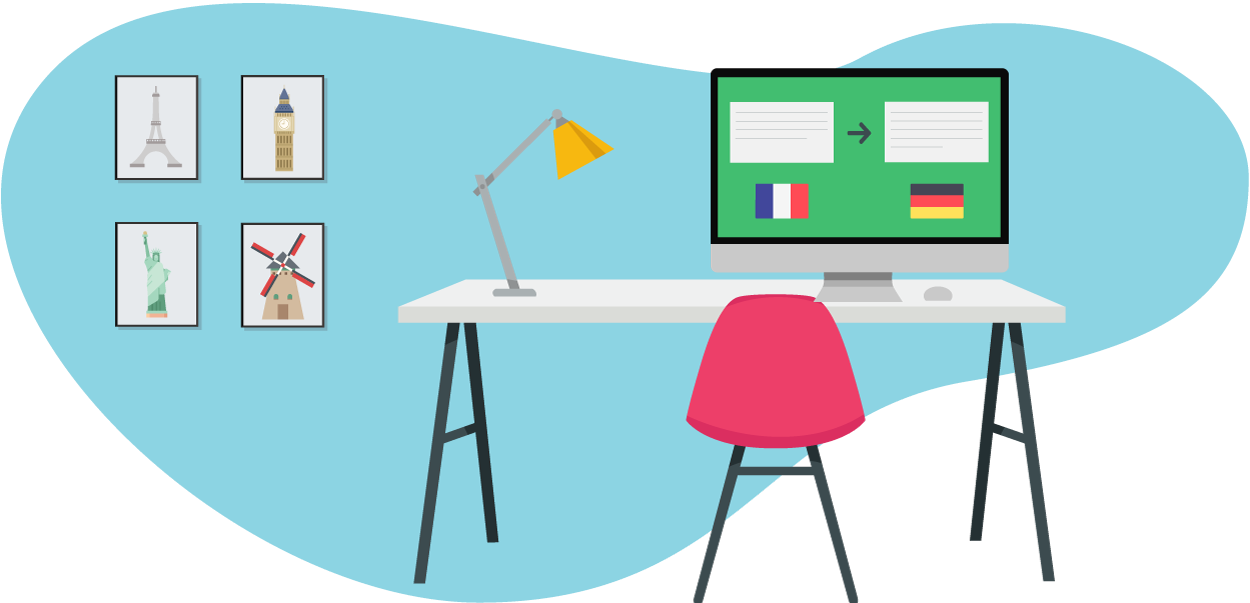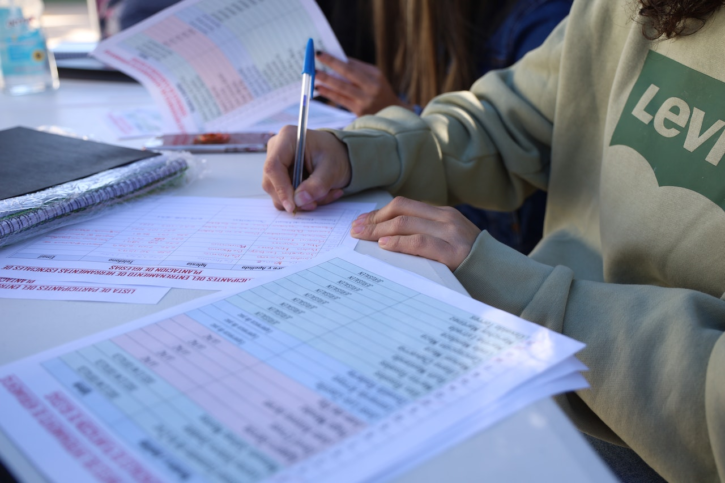Although translation is a job which requires human input, over the last few years translation tools and technologies have really come into their own. With the appearance of neural translation, artificial intelligence has made a rather grand entrance onto the market. Read this article and follow the evolution of translation technologies, a necessity in today’s world if you want to optimise your translation budget, reduce your time to market and increase productivity.
1- From 100% human to the first translation memories
Translation is doubtless one of the oldest professions in the world. From ancient Egypt to today, interpreters and translators have always had their place, as mankind has always needed to communicate.
Once upon a time, a text could only be translated using human knowledge. Translations were carried our “by hand” by polyglot humans who had only their own grey matter to rely on for translating the essence of a text into a foreign language. This process could be summarised in three steps:
- First of all, the human must read and fully understand the text: this is the understanding phase
- Next, they must move away from the words used, so that only the meaning and essence remains: this is the deverbalisation phase
- Lastly, the translator must express the text in the target langauge: this is the rewriting phase.
Fortunately, during the 20th century computer tools were created to assist translators in their work. The first stage of which was Computer Assisted Translation (or CAT) In translation jargon these tools are referred to as CAT tools: they automatically segment texts, and can record the segments of translated text to be re-used in other jobs. This was the birth of translation memory.

2- The first translation engines and Google Translate Fails
We would have to wait until the end of the 1950’s for researchers to start taking an interest in “computer” assisted translation. To find out more about the beginnings of machine translation, take a look at this online document which follows linguist’s first forays into the subject.
As Computers became more prevalent at the end of the 1990s, new interest was sparked. The first translation engines came to light and these worked by using the specific linguistic rules of each language. This is called Rule-Based Machine Translation. The rules describe the way a language behaves according to the rules of syntax, grammar or semantics. A phrase in French is separated and then reproduced in the target language according to the target language’s rules.

It’s far from being perfect, and in fact the translations are often rather unlikely…just search ‘google translate fails’ and you’ll see thousands of rather comical examples.
Following this, translation engines evolved and began, for the most part, to use a statistical approach. The idea being that translation is carried out following statistical models, supported by bilingual corpus. This is called Statistical Machine Translation. Today this is the preferred method of main online translation engines. Instant translation is always approximate, however it’s constantly improving, and, although it cannot translate a text perfectly into the target language, it has the benefit of allowing the gist of a text to be understood.
3- Machine translation 3.0: cloud and machine learning
Today the biggest trend in translation is to use both humans and machines. Recent technologies have one objective: to improve the way human translators and translation technologies, relate to each other, making for increased efficiency (and less language barriers!).
Translation memories are cloud based. Segments of text that have been previously translated by humans are recorded, and automatically shown to translators within CAT tools, the translation memory is updated in real time (and potentially by different translators).
In fact, machine translation is a very en vogue research topic right now. Translation is actually one of the areas where artificial intelligence can be best applied. Translation engines are updated with each translation and can be specifically trained to work in certain industries or areas of activity for more precision.
The evolution of translation technologies leads us to some important questions, firstly, how far can translation engines evolve with regards to precision and reliability? In other words, is the translator’s profession endangered by translation technologies?
In fact there is no real opposition between human translators and translation technologies: the two are complementary and translators have learned to rely on high performance technologies to improve the productivity and quality of their work. This hybrid model is used overwhelmingly (by translators and the companies who use them), as it means that productivity can be increased, so translation costs and delivery times are reduced, and coherence and quality is still ensured.
The constant improvement of artificial intelligence systems used within the translation sector show that there is still enormous progress to come and so translations will become ever more pertinent.
To find out more about the benefits of combining technology and human translations, download our guide!







